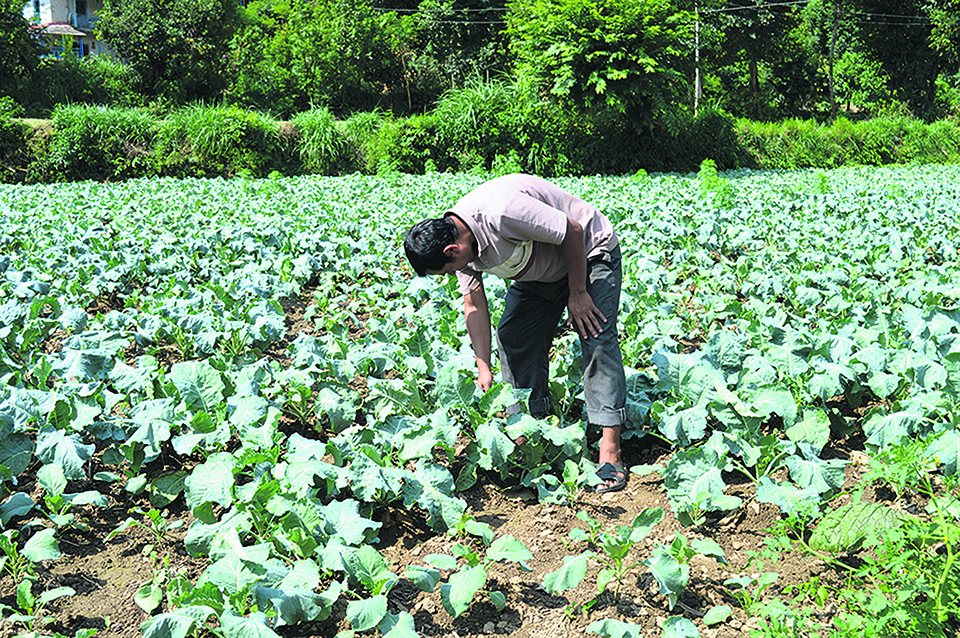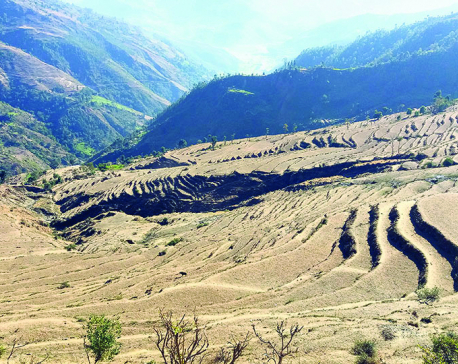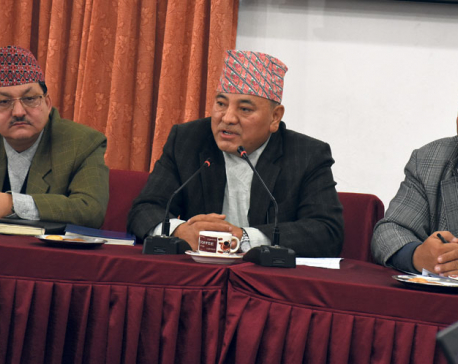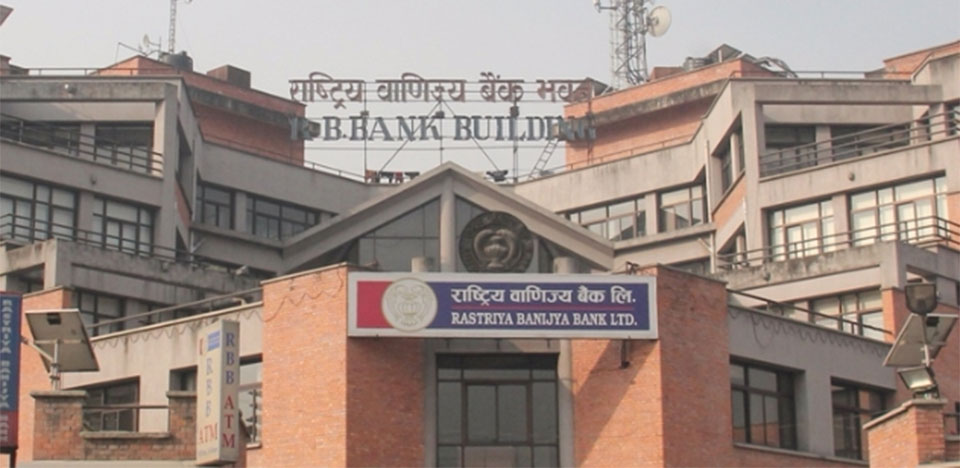
OR
How to attract young people to farming?
Published On: September 15, 2019 01:00 AM NPT By: Bhairab Raj Kaini

The agriculture becomes attractive to young people only when it’s profitable, competitive, and dynamic
Agriculture needs to be modernized and commercialized to ensure the country’s sustainable food security. This is only possible if we can attract young people to farming. They bring energy, vitality, and innovation into the farming system. They prefer to be engaged in high-tech, high-risk and high-returns agri-ventures like protected agriculture, precision farming, floriculture, poultry, and dairy. In the most adverse and risky situations, young people have extraordinary resilience and ability to cope. So they are an ideal catalyst to change the poor image of Nepali agriculture given their greater possibility to adapt new ideas, concepts and technologies. According to the National Youth Policy 2015, youths are described those between the ages 16-40. Approximately 40 percent of the total population of Nepal falls under this category. This situation can serve as a demographic strength for Nepali agriculture.
Creating interest
The migration pattern of rural youth to abroad and urban areas is alarming. This has negatively impacted Nepali agriculture. The government introduced Rs 500 million subsidy programs to attract youths to farming. But subsidy alone cannot address the issue of young people not wanting to involve in farming.
The agriculture becomes attractive to young people only when it’s profitable, competitive, and dynamic. For this, use of innovative technologies, improvement in input supply, improvement in infrastructure network, easy access to land and finance, and upgradation of farm operations are a must. Young people expect to maintain a decent standard of living and develop a secure future for themselves and as well as their families.
If agriculture continues to be at monsoon’s mercy, youths will not be attracted to it. Moreover, agriculture sector in Nepal is facing a number of problems like climate change, unregulated market, land degradation, land fragmentation, inadequate infrastructures, unavailability of production inputs, and weak research and extension support. Besides, agriculture is seen as a profession of dust, dung and soil.
Public policies governing trade and taxation, development of new technologies including crop varieties and animal breeds, licensing and intellectual property rights, and risk minimization do not yet provide adequate incentives to producers and innovators. The investment climate in agriculture is not adequate to attract private firms needed in marketing, processing, input supply, and finance. Unless all these issues are addressed through integrated programs, youth will not be interested in farming.
Moving forward
Providing agricultural research support as per demand can effectively encourage youth participation in agriculture as they are willing to adapt to new ideas and technologies. Technical support on protected agriculture is on the top of the demand list. Some of the effective extension strategies could be counseling and guiding rural youth, creating awareness about youth programs, entrepreneurship development, promotion of scientific farming and agri-business.
Network of agriculture universities and colleges should also play a leading role in inculcating self-confidence and capabilities among the students required for taking up agriculture as profession. Farm graduates can begin by launching of agro-clinics and agri-business centers in villages as rural enterprises. Furthermore, adding agriculture to the curriculum of ten-plus-two level classes will also help attract youths in farming. Even primary and high school education could include modules on farming, from growing to marketing crops. This could help young people see agriculture as a potential career.
Information and communication technologies (ICTs) are effective to attract youth in farming. Success stories of innovative young farmers or agri-preneurs should be disseminated through radio, TV and YouTube to motivate others. Community radio and social media also play vital role in encouraging and making young farmers aware about the possibilities in the sector.
Commercialization of agriculture should be supported by investing on basic infrastructures like construction of irrigation channel, link roads, market centers, cold store and processing centers. There are strong linkages between industry and farming. The industrial agriculture should include innovation in agricultural machinery and farming methods, use of biotechnology in agriculture, techniques for achieving economies of scale in production and the creation of new markets for consumption.
High value commodities that have comparative advantages should be promoted as income generating activities in the region where there is a high possibility of producing these products.
There are commercially viable alternatives in the high hills to cope up with food shortage which include animal husbandry (sheep, goat, and yak farming) for wool, meat and milk and milk products. Emphasis on non-timber forest product (NTFP) comprising of Yarshagumba and other locally available medicinal herbs, mushrooms and many more should be promoted for commercialization.
Nepal is a micro-museum of world climate and has been impacted by global warming. The consequence of climate emergency has been observed in many parts of the country. Its impact on food production and agro-biodiversity maintenance should get priority in the research programs.
Provisions to receive credits from banks for agriculture-related works must be eased. Young people’s voice must be heard. They should be provided opportunities to offer their opinion and experiences at program planning level. Young farmers should be encouraged to speak up on the issues they are facing. Most of all, young farmers deserves our respect.
You May Like This

UML leader Basnet to Balen: Don't be pampered just because you have a few hundred fans on Facebook
KATHMANDU, August 26: While the Mayor of Kathmandu Metropolitan City (KMC), Balendra Shah, is speeding up the work to demolish... Read More...

Agriculture and poverty
So long as we fail to retain agricultural workers the much-hyped agenda of poverty alleviation through massive agricultural production will... Read More...

More investment needed to boost farm production: Agri secy
KATHMANDU, Dec 27: Secretary of the Ministry of Agriculture and Livestock Development, Yubak Dhoj GC, on Wednesday said that the country's... Read More...
Just In
- UAE secures spot in ACC Premier Cup final, defeating Nepal by six wickets
- NC to boycott Gandaki Province Assembly, submits letter to Speaker
- 850 grams of gold seized from Indian national at TIA
- Rupandehi District Court orders to release Dipesh Pun on a bail of Rs 400,000
- Teachers’ union challenges Education Minister Shrestha's policy on political affiliation
- Nepal sets target of 120 runs for UAE in ACC Premier Cup
- Discussion on resolution proposed by CPN-UML and Maoist Center begins in Koshi Provincial Assembly
- RBB invites applications for CEO, applications to be submitted within 21 days













_20240311121839.jpg)





Leave A Comment